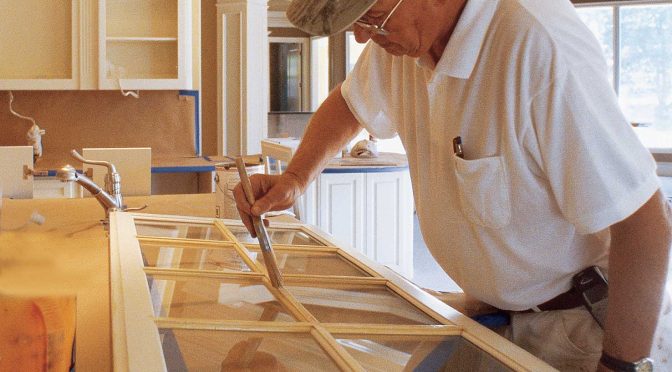Answers to pro painters’ most pressing questions by Rick Watson
I live in California, and though I have looked I have not been able to find a lacquer undercoating. What can I use besides a water-based primer to seal stained cabinets for painting?
Lacquer sealers and finishes are still available in California. There are several <275 g/L products on the market that can be used over stained woodwork.
If you are wanting to paint over existing cabinets, as with any paint project I recommend first making sure you prepare the surface so it is clean, dry, dull and sound.
After removing the hardware, I would recommend that the cabinets be thoroughly cleaned to remove all greases and oils that normally build up on kitchen cabinetry over time.
Once cleaned, I would apply a test sample of Extreme Bond Primer in an inconspicuous area.
Test for adhesion
After applying a test area of Extreme Bond, allow to dry properly and test for adhesion. Because of the exceptional adhesion of this product, sanding may not be necessary for most clean, paintable surfaces.
Once you have established good bonding, you can prime the entire surface.
Keep in mind that any surface prep short of the total removal of the existing coating may compromise the service length of the system used.
A quality wood filler/putty should be used to patch holes or imperfections in the surface. Shellac-based primers are not normally necessary unless you are working on a fire restoration project.
I would recommend a water-based urethane modified alkyd or a water-based acrylic-alkyd coating. These products have excellent flow and leveling characteristics for a smooth and durable finish on cabinets, doors and trim.
Important! Read this before you prep
WARNING! Removal of old paint by sanding, scraping or other means may generate dust or fumes that contain lead. Exposure to lead dust or fumes may cause brain damage or other adverse health effects, especially in children or pregnant women. Controlling exposure to lead or other hazardous substances requires the use of proper protective equipment, such as a properly fitted respirator (NIOSH approved) and proper containment and cleanup. For more information, call the National Lead Information Center at 1-800-424-LEAD (in US) or contact your local health authority.
This article was originally published in the Summer 2016 issue of PPC magazine. Photography by Mike Starling, PPC Editor. Rick Watson, director of Product Information and Technical Services at Sherwin-Williams, answers questions from pro painters in the Ask Your ProPartner™ column in PPC magazine.
Got a question for Rick?
CONTACT US

